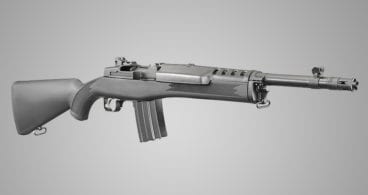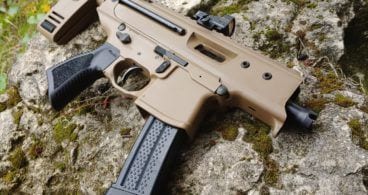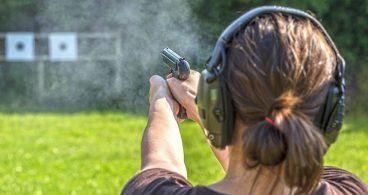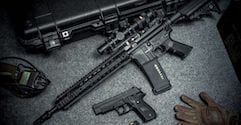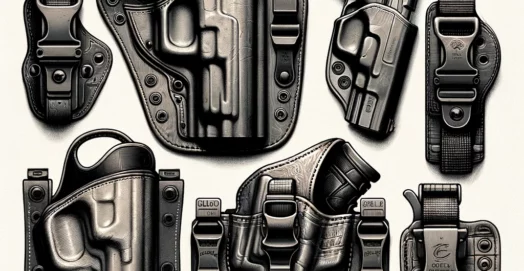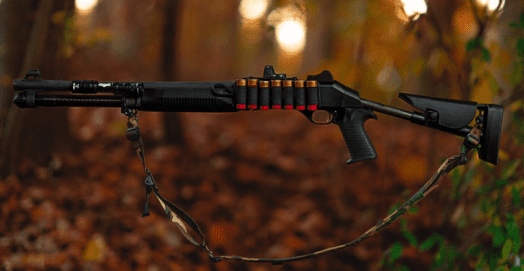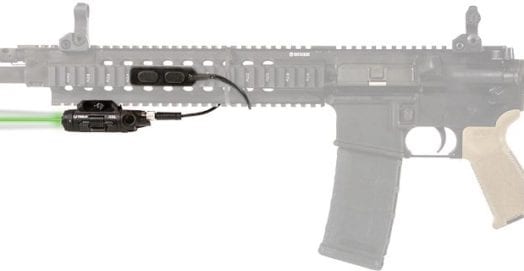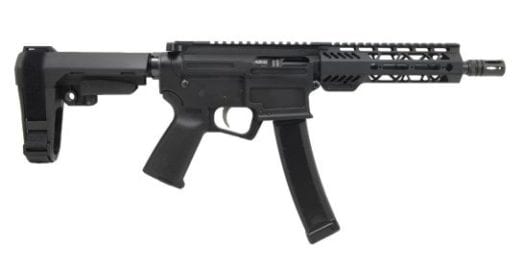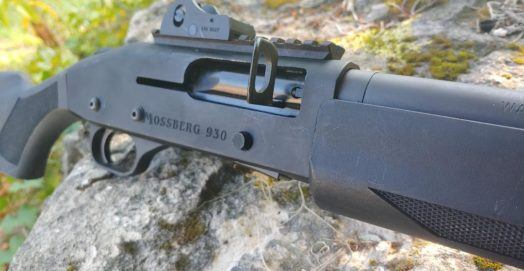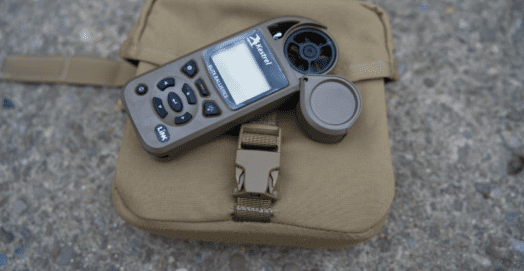.30 Carbine – A Complete Guide (Ammo, History and Guns)

The .30 Carbine: an interesting cartridge with an interesting history. It’s not a round most people are familiar with, despite its impact on the world. I mean, this is essentially the first “intermediate cartridge,” and the overall design goal for this would eventually lead to the 5.56 NATO/.223 that we all know and love today.
This round—and the rifle it was designed to be fired from, the M1 Carbine—had a substantial impact on the way the US fought its wars, and both are still relevant today.
Want to know more about the .30 Carbine?
Let’s dig into the history of this somewhat unknown caliber and talk about where it is today.
History of the .30 Carbine
Shortly before the outbreak of WWII, the US Army had a problem. Namely, the M1 Garand, that legendary battle rifle that beat the Nazis, was too heavy. At least for support personnel.
Imagine: It’s 1938, Germany is making ugly noises throughout Europe, Japan is rattling its sabers (katanas?) and the latest war to end all wars is imminent. You’re a radio operator or maybe an artilleryman, and in addition to your regular field kit and radio/mortar equipment, you also have to carry a full-sized rifle that weighs about 10lbs and is constantly getting in the way, whether carried or slung across your back.
Now, you can’t just leave that rifle behind. Going into any combat situation with just a pistol vs rifles and machine guns is just asking for trouble. But you’re also going to be dramatically encumbered by bringing it along.
Then Came the U.S. Army…
The US Army attempted to address this problem with its carbine program which sought to develop a weapon that was “more than a pistol but less than a rifle.” Remember that phrase as it’s basically the defining parameter of the .30 Carbine.
The goal was to develop something that would give officers, artillerymen, radio operators, medics, and other support staff more defensive power than the M1911 sidearm, but without the extra encumbrance of the M1 Garand.
What they would eventually settle on was the M1 Carbine chambered in .30 Carbine.
The .30 Carbine did a great job of bridging the gap between the .45 ACP round fired by the M1911 and the Thompson Submachine Gun, and the .30-06 round fired by the Garand and the BAR. The M1 Carbine quickly earned a reputation as an effective infantry weapon for support troops. Again, more than a pistol, less than a rifle.
The Army also quickly realized that paratroopers jumping with full-length rifles was an untenable prospect at best, and a disaster waiting to happen at worst, so the original M1 carbine design was quickly modified to accommodate folding stocks for paratrooper operations.
In the years during and immediately following WWII, millions of M1 carbines were produced, and they stayed in use all the way up to the end of Vietnam and even today they can be found in the hands of some rural police forces, as well as civilian gun collections.
During this time, the .30 Carbine earned its place as an excellent “intermediate” cartridge and though it would eventually be replaced by the 5.56×45 in most applications (as would the .30-06 of the Garand), it is still produced in huge numbers today.
The .30 Carbine Today and Ballistics
Modern .30 Carbine ammo has come an awfully long way, and owners of original or reproduction M1 carbines have a host of excellent ammo options available beyond the rather anemic (by today’s standards) 110gr FMJ that was originally developed for use with the M1.
Ballistically, the .30 carbine is never going to win any awards for a long-range round, but for a defensive weapon designed to be fired at ranges that are “more than (what you want to shoot with) a pistol, but less than (what you can do with) a rifle”?
It still fills that niche perfectly.
Modern .30 Carbine ammo, like Hornady’s 110gr FTX leaves a carbine-length barrel at almost 1900fps…nearly double what the original 110gr FMJs of WWII were capable of. And that extra power is pushing a modern hollow point that is absolutely devastating at self-defense ranges, even through several layers of clothing.
You can also get an incredibly stout load like Buffalo Bore’s Full Power+ FMJ which leaves the muzzle at over 2100fps in a carbine-length gun. That gives you a muzzle energy of 1,077ft-lbs. That’s greater than a 220gr .44 Magnum defensive load from a handgun.
That’s certainly nothing to sneeze at when it comes to distances inside 100 yards, which is more than enough for defensive-distance use. Out of a pistol, that recoil is going to be rather stout, but fired from a 5lb rifle like an M1 Carbine or a reproduction? Even the most recoil-sensitive shooters will be able to wield it effectively.
The M1 Carbine
So, .30 Carbine ammo is alive and well…what about the gun it was designed for, the old M1?
Like I said before, there are still millions of wartime models out there, but the reproduction market is strong as well. Let’s talk about some of these guns in depth because chances are if you’re interested in .30 Carbine, you’re interested in the M1 as well.
The Original M1 Carbine
If you’re looking for an original M1 Carbine, condition is going to be the big deciding factor in how much you pay. A service grade paratrooper model is going to run you over $3000 easily, and collector grade offerings often go for $5,000 or more depending on if any of the original equipment is present also.
A lower grade model might cost you $1000-$1500 if you catch a pawn shop or gun show one being sold by someone in a good mood.
These wartime models are still solid and dependable, but if you’re just looking for something for defensive use or for plinking -a “shooter” instead of a wall-hanger, in other words- give one of the reproductions a try.
If you want to own a piece of history however, you could certainly do worse than the M1 Carbine. This is a tangible piece of firearms history that you can proudly display, and even hunt or defend your life and loved ones with.
Inland Manufacturing M1 Carbine
If you don’t quite have “WWII antique” money to spend, or you’re looking for something that can sit in a toolbox without worry, Inland Manufacturing (not the original Inland Manufacturing, but a company that has taken over the name) makes an excellent reproduction of that fateful carbine in the spirit of the original.
This gun is commonly seen at M1 Carbine Matches and is a great home-defense choice for someone looking for a carbine solution. They also look very, very good and take advantage of modern machining and manufacturing advances to give you a gun that quite honestly performs even better than the original does accuracy-wise.
They’re typically available for around $1000, and as with all things M1 the paratrooper version is a little more expensive.
Auto Ordnance M1 Carbine
Auto-Ordnance (now owned by Kahr) was one of the very first companies to start making new M1 carbines. A-O makes all the parts for these carbines new in their Worcester, MA facility on a computerized production line…a far cry from the way the first M1’s were hastily thrown together by anyone the government could find with a machine shop, including a jukebox manufacturer.
The new A-O Carbines have a Parkerized finish and walnut furniture. All models, including the paratrooper version, are faithfully accurate recreations of the original carbines, making them great for those who want to own a piece of Americana, maybe a piece similar to what Grandpa carried, but don’t want to pay used car prices for an original model.
What Other Firearms are Chambered in .30 Carbine?
Of course, .30 Carbine isn’t just for M1 Carbines, even if those are far and away the most popular guns chambered in the caliber. Here are some other great guns chambered in .30 Carbine.
Ruger Blackhawk
Ruger’s Blackhawk is one of the best selling modern single-action revolvers on the planet, and certainly one of the most reliable and widely-available. It is available in a variety of calibers, including of course the .30 Carbine.
These revolvers are absolutely bombproof, 100% reliable, and available just about anywhere guns are sold, though you may have to hunt around online to find a .30 Carbine version. Recoil is stiff, but not unmanageable. Remember, you have a big, heavy, steel frame to soak up a lot of that energy, and the Blackhawk is agreeable all the way up to the .454 Casull range.
If you’re looking for a compliment to a larger .30 Carbine gun, this is also a great choice. These guns are accurate, and make for a great companion in bear country, although I’d opt for the .44 Magnum or .454 Casull versions over the .30 Carbine version if I were looking for bear defense.
Inland M1 Advisor
Okay, this is technically an M1 Carbine variant, but I’m including it because A) its a new-manufactured product that’s very different from your standard M1, and B) there just aren’t that many modern firearms that are still made that aren’t an M1, sorry guys.
The Inland Advisor is basically just a cut-down M1 Carbine with a pistol-length barrel and a pistol grip. It’s basically an M1 Pistol.
Why does this exist? Well in the latter part of the M1’s duty cycle, it was used heavily in Vietnam. The “Advisor” part comes from the fact that this gun was used extensively by special forces advisors and “tunnel rats” who found the gun to be extremely effective for operations in tight environments and dense jungles.
These folks either didn’t have, or just weren’t impressed with the M16, which was kind of a mess at the time, and so they went to a modified version of the old standby, the M1.
Today, Inland makes a factory version of this design that gives you a true M1 Carbine pistol that’s even more accurate and reliable than the original. These are a fun novelty but also a great “truck gun” or just general defensive choice for those looking for something different. I wouldn’t exactly call it a concealed carry option though unless you’re big into trench coats.
What’s the Best .30 Carbine Ammo?
Of course, all these guns aren’t much use without something to feed them with. Here are some great ammo options.
Buffalo Bore Full-Power+
If you’re looking to get the absolute most out of your .30 Carbine firearm, Buffalo Bore’s Full-Power+ load is a good place to start. This load gives you .44 Magnum energy out of a M1 Carbine barrel…not too shabby for a round that’s almost 100 years old.
Hornady FTX Critical Defense
Hornady’s Critical Defense line is one of the industry standards when it comes to controlled-expansion hollow points specifically designed for self-defense. I carry this stuff in 9mm on a daily basis, and I’ve seen what most of their offerings do to ballistics gel. I have no problems recommending it to someone looking to use their .30 Carbine firearm for defensive purposes.
Prvi Partizan FMJ
There are a number of quality FMJ offerings out there for .30 Carbine that don’t have much to distinguish them from each other. Tula, Wolf, and Prvi Partizan are all fairly cheap, or for just a few cents more you can upgrade to something like Remington UMC. All are about the same, quality-wise.
.30 Carbine: Parting Shots
.30 Carbine may have been around for a long time, but that doesn’t mean it’s past its use-by date just yet. This venerable round still has some fight in it and is used all over the world. It’s especially important to those who own M1 Carbines, either new models or original. These old (or just old school) guns can still hold their own for everything from hunting to self-defense and are great fun to own and shoot.



